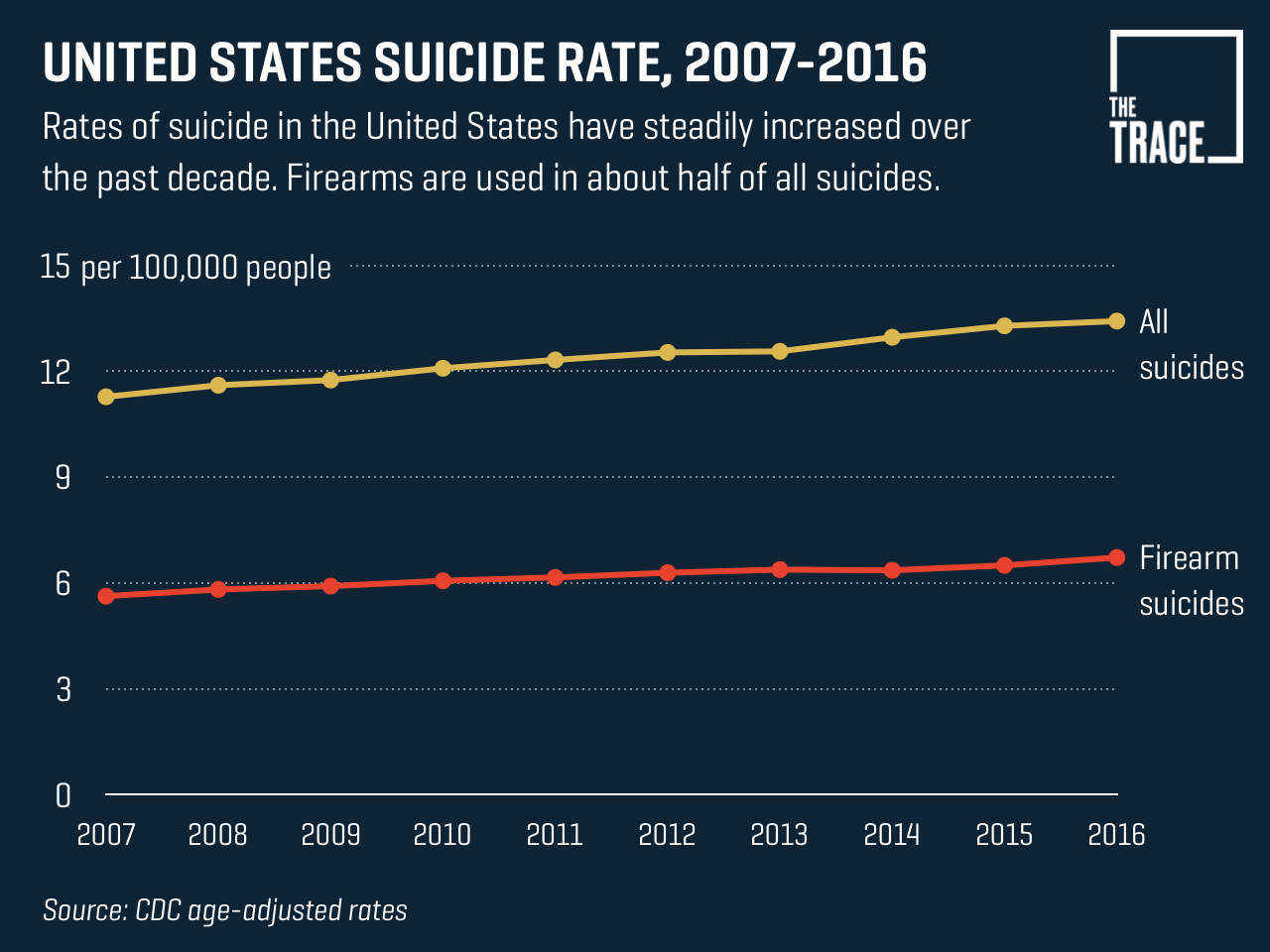America’s suicide rate is rising, surging by nearly a third since the turn of the millennium. Within that public health crisis is an underlying problem: a jump in the number of people taking their own lives with firearms.

According to the Centers for Disease Control and Prevention, 44,965 people died by suicide in 2016, up from 29,199 in 1999. The CDC counted 22,938 suicides by gun for in 2016, the most recent year for which data is available.
That’s up from 20,666 firearm suicides in 2012, a 10 percent increase in just five years.
In each of the past five years, approximately half of all suicide deaths were completed with guns. Guns are not the most common means of suicide attempts but they are the most lethal, according to the Harvard T.H. Chan School of Public Health, which is why firearm suicide is of particular concern for public health experts. More than 82 percent of suicide attempts by gun are fatal, compared to almost 66 percent of attempted drownings and 61 percent of those who try to suffocate or hang themselves.
A recent report from the CDC notes that among those who do not have a documented history of mental health issues, suicides typically followed common life struggles, like relationship problems. Strikingly, the study found that the portion of suicides completed with firearms was higher among people with no known mental health problems. More than 55 percent of people without a known history of mental illness who killed themselves used guns to end their lives.
Find Support
Help is Available 24 Hours a Day
Crisis Text Line
Text 741741
The Veterans Crisis Line
988, press 1, or text 838255
Help Someone Else
Understand warning signs.
Gun suicides are most common in rural, gun-friendly states: Montana has the highest rate, followed by Alaska, Wyoming, New Mexico, and Utah. The states and jurisdictions with the strictest gun laws also have the lowest suicide rates: Washington, D.C., has the absolute lowest, while New Jersey, New York, Massachusetts, and Maryland round out the bottom five.
The gun world is beginning to grapple with the role firearms play in the increasing suicide rate. A 2017 survey of adults’ formal firearm education, commissioned by the Joyce Foundation, found suicide was the least-covered topic. But some within the industry are taking action.
Gun stores in New Hampshire, for instance, have joined with mental health and public health experts to launch a suicide-prevention outreach effort. In 2016, Utah became the rare state to include suicide-prevention education in its popular concealed-carry training classes.
In the wake of mass shootings like the one in Parkland, Florida, a growing number of states have passed red flag laws that allow police or family members of gun owners to petition a court to seize legally owned guns. While these laws have been pushed as responses to mass shootings, there is evidence the orders could reduce suicide as well. A study of civil gun seizures in Connecticut and Indiana published this month found that when people in those states pursued the orders, rates of suicide fell from a range of 7.5 percent up to 13.7 percent.
